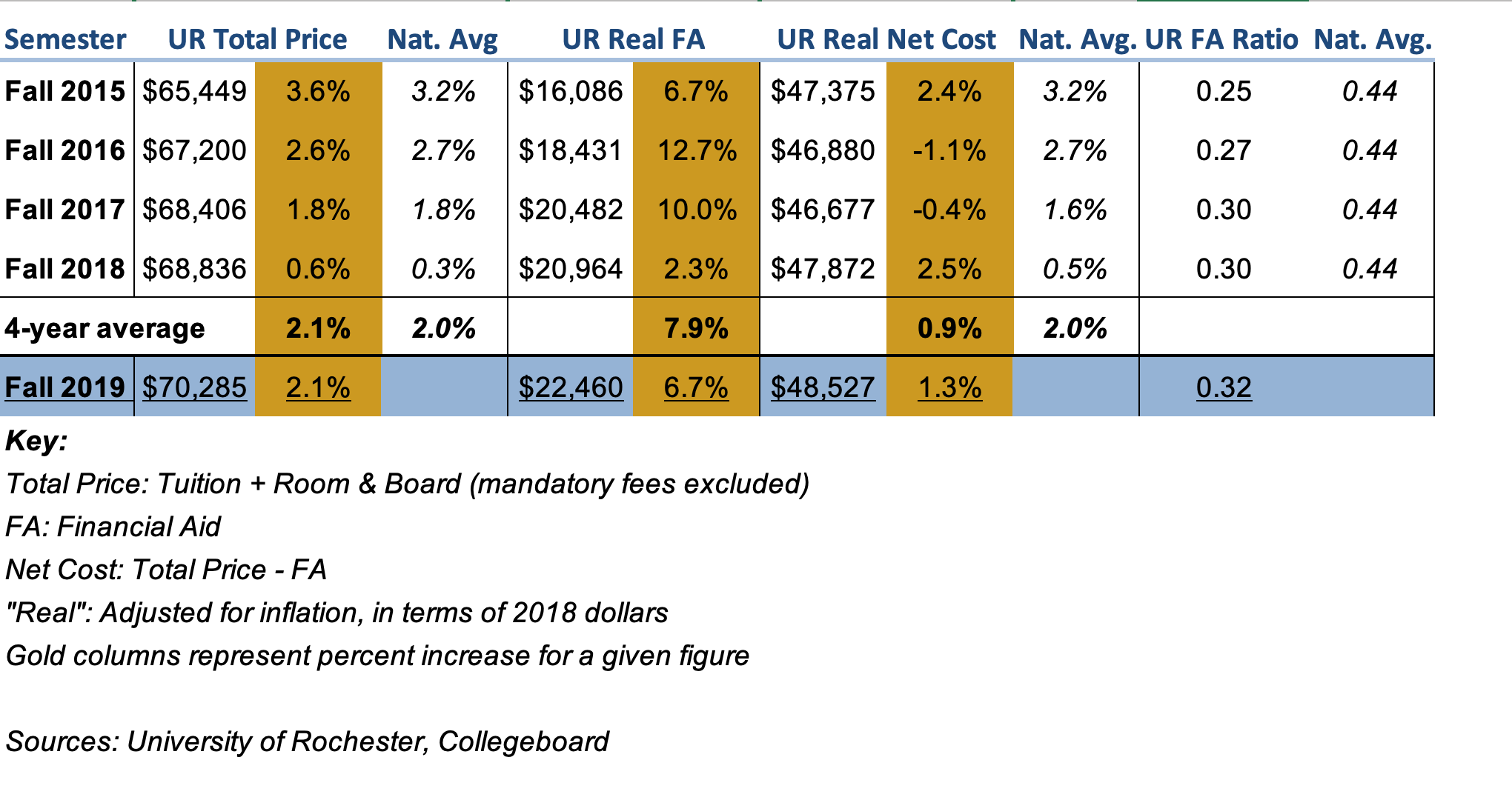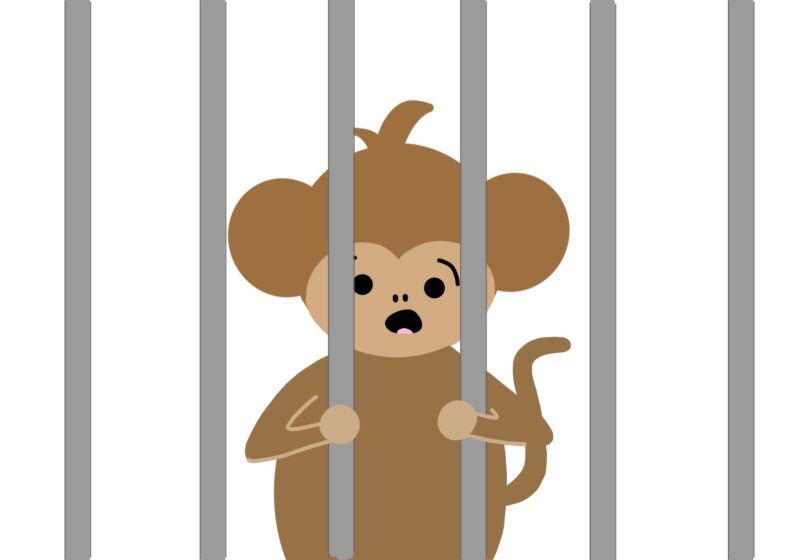Undergraduate tuition next year at UR will cost $55,040. That’s an increase of 3.9 percent. Tuition is also on the rise for grad students, Eastman students, and URMC students.
You could roll your eyes at the continued upward trend in cost, or trust that the school is putting this money in the right places to improve our educational experience. Before you reach your conclusion, though, make sure you’re taking your numbers with a side of context.
To start, when we talk about tuition as students, we’re focused on how much money we’re paying. So we should be talking in terms of total price, which takes into account room and board as well as tuition (for the purposes of this article, we aren’t taking into account the roughly $2,000 in mandatory fees students also pay due to limited data). The total price of attending UR next year will be $71,410, also a 3.9 percent increase from this year’s figure.
But we’re not paying that much on average, due to financial aid. The average UR undergrad will be getting a projected $22,100 in institutional grants and scholarships. That’s a 5.5 percent increase. Subtracting financial aid from the total price figure gives $49,303 in net price — the average amount undergrads will actually pay to go here, not including federal aid.
Still, in terms of trends, that number isn’t all that enlightening. It doesn’t account for inflation or show how UR stacks up with other institutions. So let’s talk in terms of real net cost. In economic terms, “real” means adjusted for inflation (because it’s still early in the year, we’ve put everything in terms of 2018 dollars).

As shown in the table, UR’s real net cost has increased by just under 1 percent on average each of the last four years. The national average among four-year, private, nonprofit institutions is just over double that. Next year, the real net cost should go up by 1.3 percent. That seems reasonable, at least within the runaway freight train of elite college costs. Looking across the chart, the story of UR as a school mirroring national trends in pricing while pumping out financial aid seems to emerge.
There’s a major caveat, though. The national average ratio of financial aid to total price is 44 percent. Next year, UR will be chugging past the 30 percent threshold. Perhaps this surge is a game of catch-up.
Here’s where the school providing more context could help — this figure doesn’t look great, but how does it compare with that of other institutions in the American Association of Universities (AAU)? Students at the University tend to be more affluent than those at the average school, so less aid makes sense. But how much of the aid is merit versus need-based?
The University’s release only presents the raw numbers and percentage increases. In fact, it doesn’t even give the average financial aid per student, instead giving the total budget. (We had to find the enrollment elsewhere to get a per-student figure.)
So how does UR explain the rise of tuition? Well, they say it’s because of the libraries, instruction, student services, operations and maintenance, and general administration and institution. (We’ll give you a moment to get over your shock.)
At the very least, a breakdown of how much of our tuition falls into each category doesn’t seem likely to ruin UR’s business model.
The lack of context doesn’t seem to be a PR move, given that further analysis arguably makes the University’s pricing scheme look more favorable to students.
So it’s just a matter of a school with a research focus — not to mention a one-of-a-kind data science department — giving us a greater picture. UR can even attribute the rise in tuition to these extra 10 hours of research.




